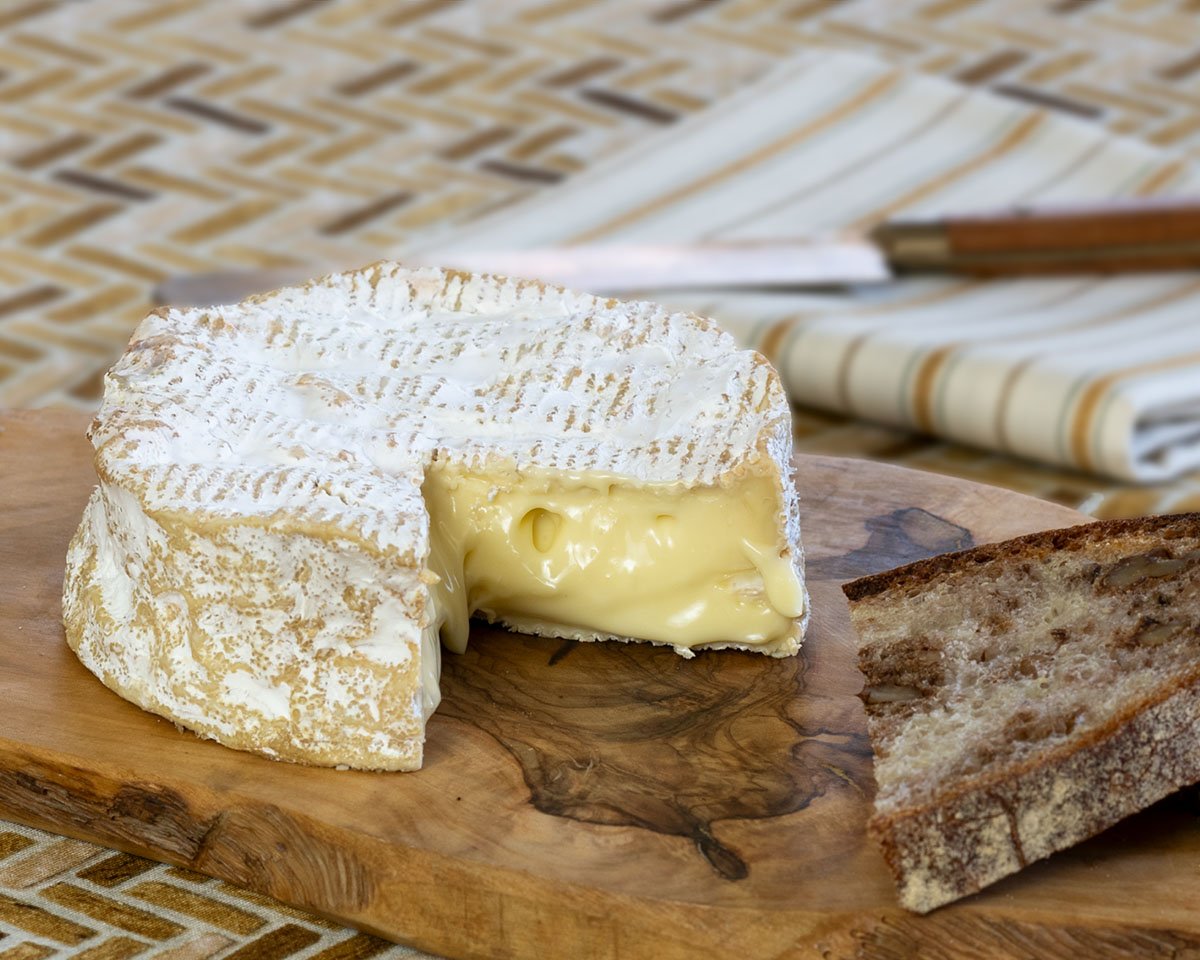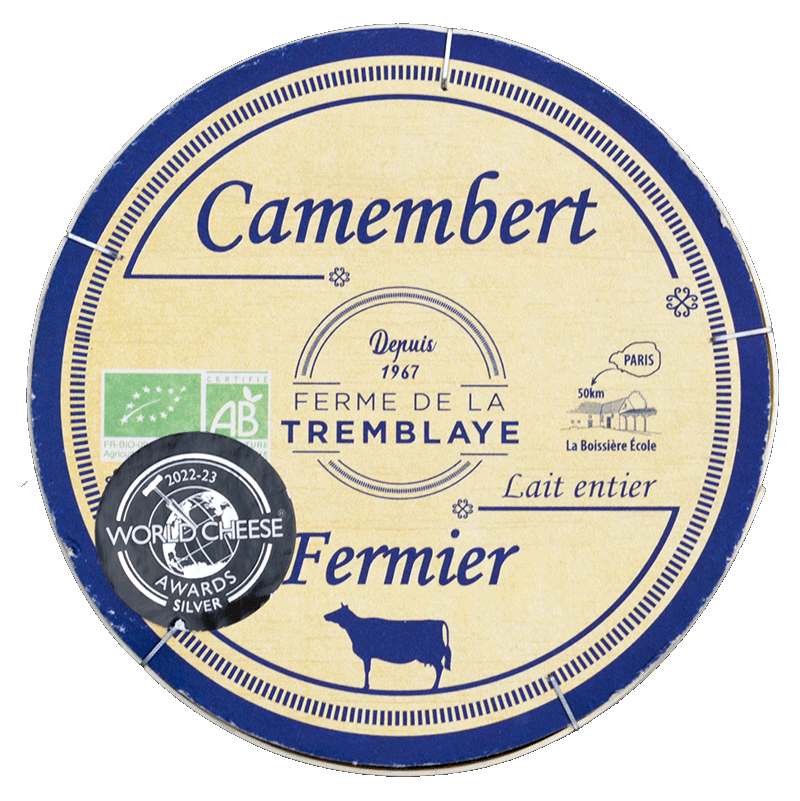The difference between good Brie and mediocre Brie is so vast that I tend to avoid the cheese entirely. Let’s face it: the best Brie is in France, where producers can use raw milk. Mediocre Brie is what you find at most supermarkets, made from pasteurized milk and dead on arrival. Why isn’t it more supple? Where’s the aroma? Believe me, with the Brie (pictured above) and Camembert (below) you won’t be asking those questions. These two cheeses, from the same French creamery, demonstrate the heights possible with pasteurized milk. I would love to pit them side by side against their raw-milk counterparts because I’m convinced they would hold their own.
Aroma bomb: Ferme de la Tremblaye Camembert
The producer is Ferme de la Tremblaye, a 55-year-old farmstead operation in the Rambouillet forest. Several online sources say the Camembert is made in Normandy but it’s not. The creamery is just west of Paris, in the Île-de-France, with 150 cows and 350 goats on nearly 700 acres.
I want to highlight three things about this creamery:
Farmstead (fermier in French): You don’t see that word often on Brie or Camembert. It means the cheese is made on the farm, with the farm’s own milk. The milk goes straight from the milking barn to the make room. That’s a huge running start for quality and it’s no longer the norm for Brie or Camembert.
Environmental leadership: Ferme de la Tremblaye is certified organic and a certified B Corp. The business is energy independent and produces enough extra energy with its methane digester to power 600 homes (a great example of how cheese can be sustainable.) All the farm’s effluent—from whey to manure—is either turned into energy or returned to the soil. You can learn more here about the farm’s efforts to rejuvenate the soil, pamper the livestock and protect the landscape. These practices explain why sometimes (confusingly) the name Ferme de Jouvence (“renewal farm”) appears on the packaging, although it seems that’s being phased out.
Quality: Ferme de la Tremblaye Brie Fermier and Camembert Fermier are both massively aromatic, especially as they approach their use-by dates. The Camembert pictured above was actually a week past its use-by date but I have zero problem with that. It smelled like cooked cabbage (that’s a good thing), bold and beefy, with a plush texture. Not for everyone, but definitely for me. The Brie was more polite, smelling of butter-sauteed mushrooms, with an equally agreeable pillowy texture. I’m not sure how the creamery achieves such satisfying results but it must have a lot to do with the mix of cultures and careful handling of the curd.
I’ve been a fan of Ferme de la Tremblaye for years and always imagined it as a small business, possibly family owned. Its goat’s milk wheel, Persillé de Rambouillet, is among my favorite blue cheeses and a rare sight. So I was more than a little surprised to learn that Savencia—a French dairy giant—owns the brand. (Savencia USA also owns Rogue Creamery in Oregon.) Maybe it’s time to confront my biases about corporate management given that Savencia appears to have Ferme de la Tremblaye on a quality-foremost path.
Ferme de la Tremblaye Brie Fermier and Camembert Fermier are widely available. View a partial list of retailers here.



